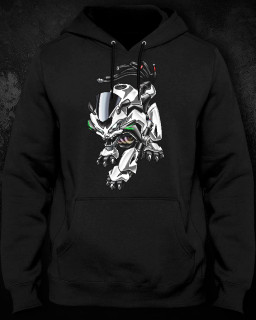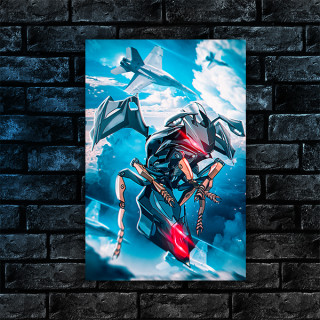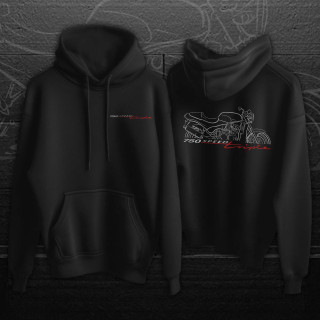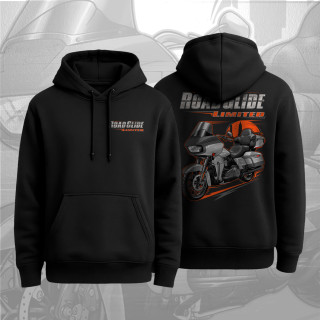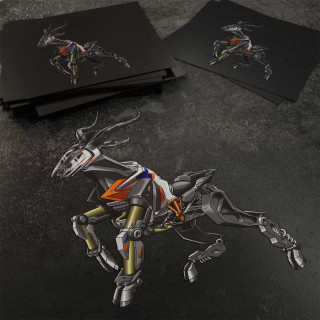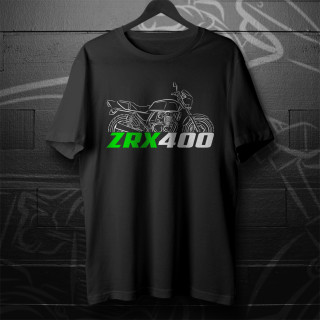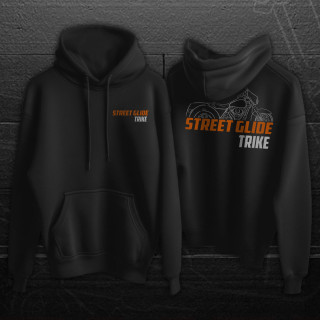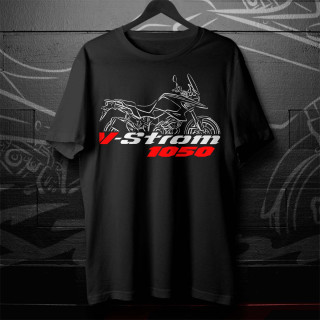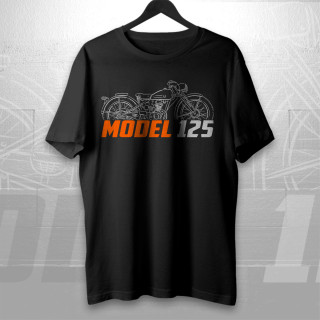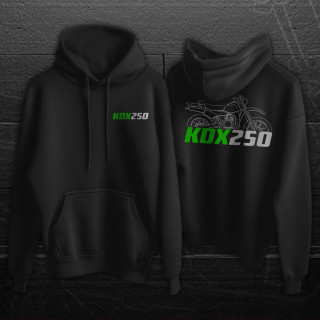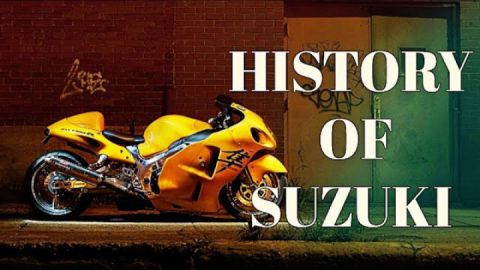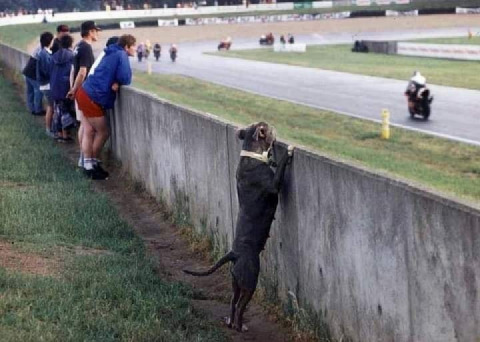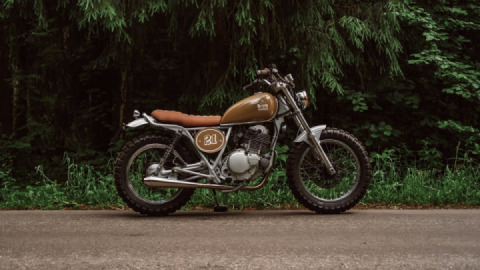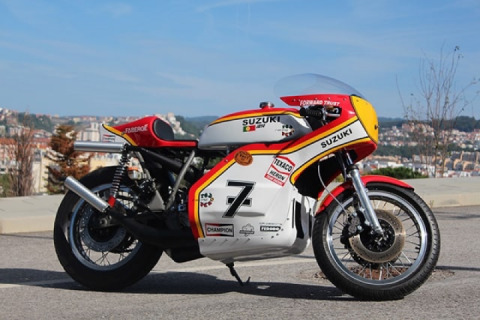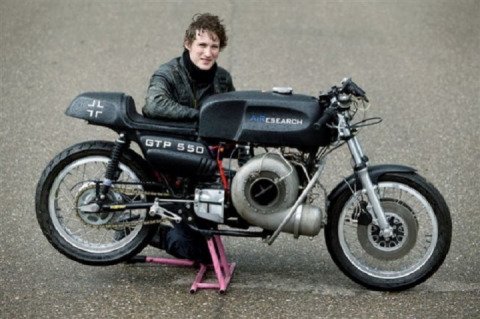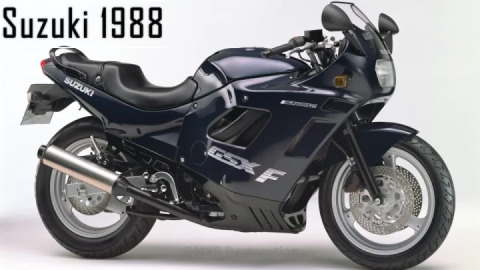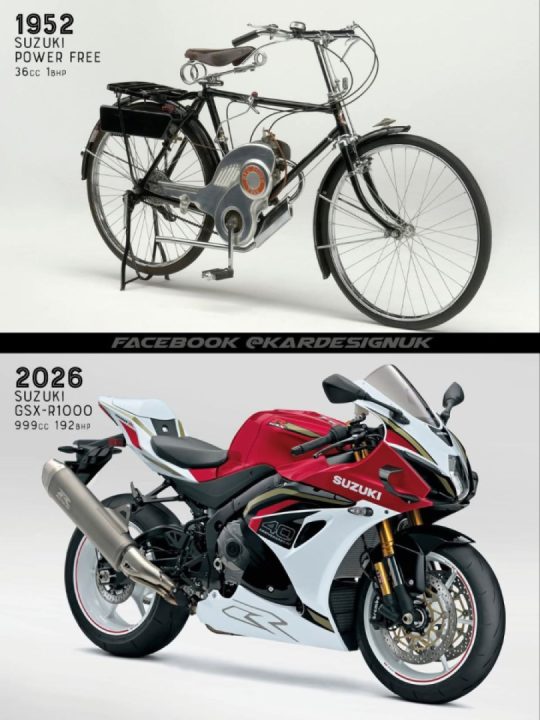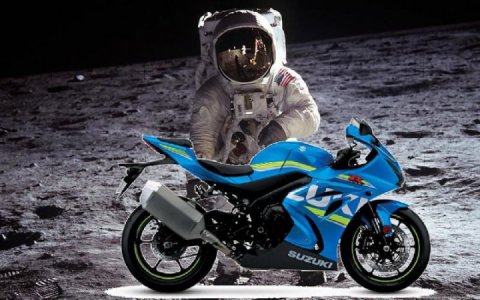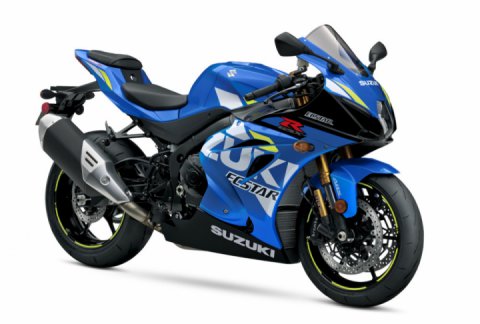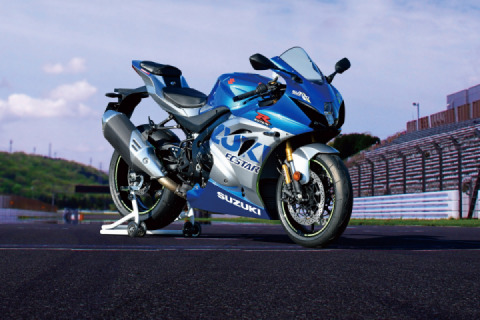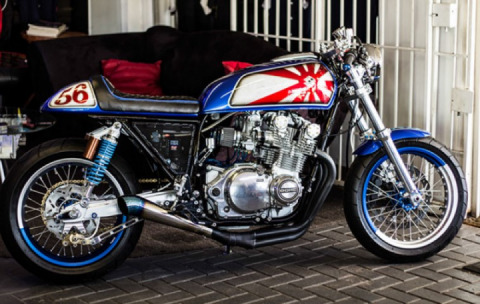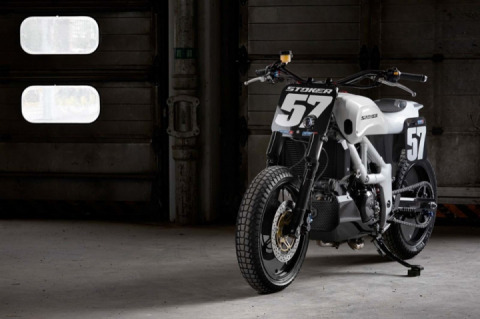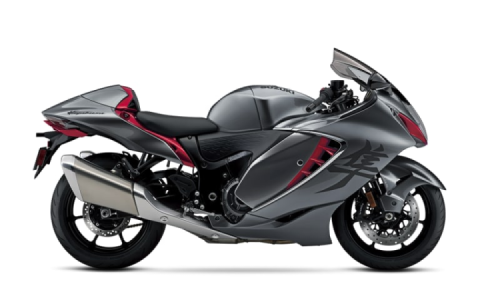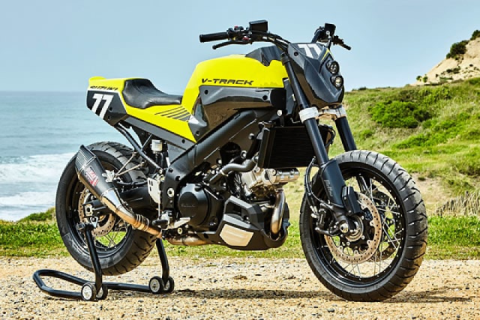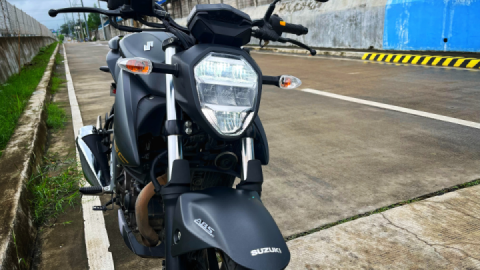
1976 Suzuki RG500 XR14 Racing Motorcycle
Six years out of Grand Prix racing, Suzuki returned in 1973 with a TR500 twin for works rider Jack Findlay, and, after what was essentially an interim season, was ready to take on the MV 'four' and Yamaha's TZ500. The Hamamatsu firm already had plenty of experience of square-four engines in the form of the defunct RZ63 250, and this compact layout was revived for its new premier-class racer: the RG500. Like its quarter-litre predecessor, the RG500 employed disc valve induction and separate geared-together crankshafts driving a six-speed transmission via an intermediate gear. Bore/stroke dimensions of 56x50.5mm were used and a maximum output of 90bhp at 10,500rpm claimed. This state-of-the-art power unit was housed in a conventional tubular-steel duplex-loop frame.
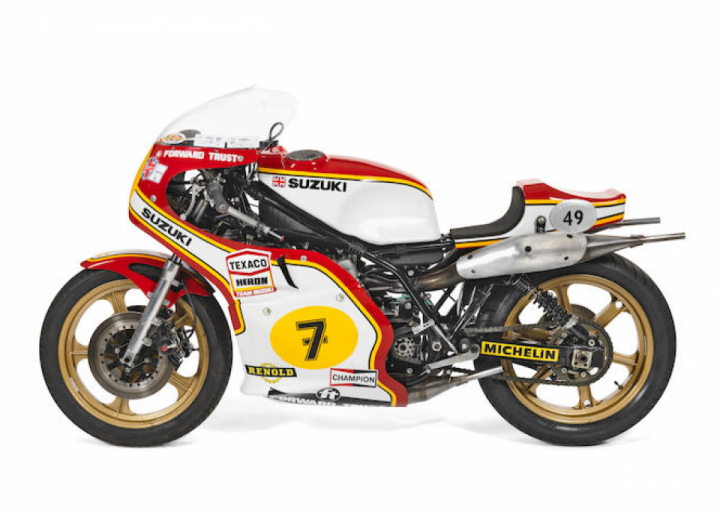
In 1974, Britain's rising star Barry Sheene, winner of the '73 FIM Formula 750 Championship on a Suzuki TR750, rode his works RG500 to a debut 2nd place in the season-opening French Grand Prix behind Phil Read's MV. Inevitably though, there were teething problems, chiefly associated with engine seizures and wayward high-speed handling. Sheene ended the season 6th in the World Championship.
The RG500 was revised for 1975 and now produced around 100bhp. Sheene's season was curtailed by a sickening high-speed crash at Daytona in March, but he bounced back to take his and the RG500's first 500cc World Championship victory at Assen later in the year. A second win, at Anderstorp, helped him to 6th in the Championship again.
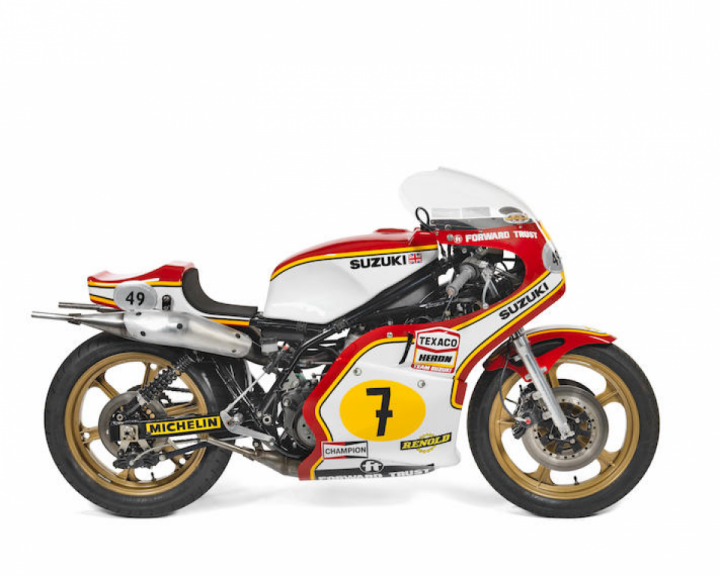
Suzuki altered the factory RG's engine for 1976, adopting the 'classic' dimensions of 54x54mm bore/stroke and fitting seven-port cylinder barrels. The two bikes built to this specification were reserved for Barry Sheene, while the other factory riders - John Williams and John Newbold - continued to use the earlier engine. Power increased only marginally, but more importantly the design was now fully sorted and reliable, enabling Sheene to win five of the six World Championship rounds he contested and finish 2nd in the other, bringing Suzuki its first title in Grand Prix racing's premier class.
The machine shown here is a stunning example of the works Texaco Heron Team Suzuki RG500 Mark 1 - the XR14 - and has the 56x50.5mm engine. The frame has two serial numbers: a Suzuki RG500 number, '11065', while the other - stamped 'T500 28193' - is that of a T500 roadster. This was a common practice at that time and is an important part of the bike's history. At that time, factory teams travelling from race to race had to use carnets, which were a complex customs document required by countries such as Czechoslovakia. To facilitate the speedy importation of their race bikes, many teams simply stamped a road-bike number on the frame and took a logbook with them.
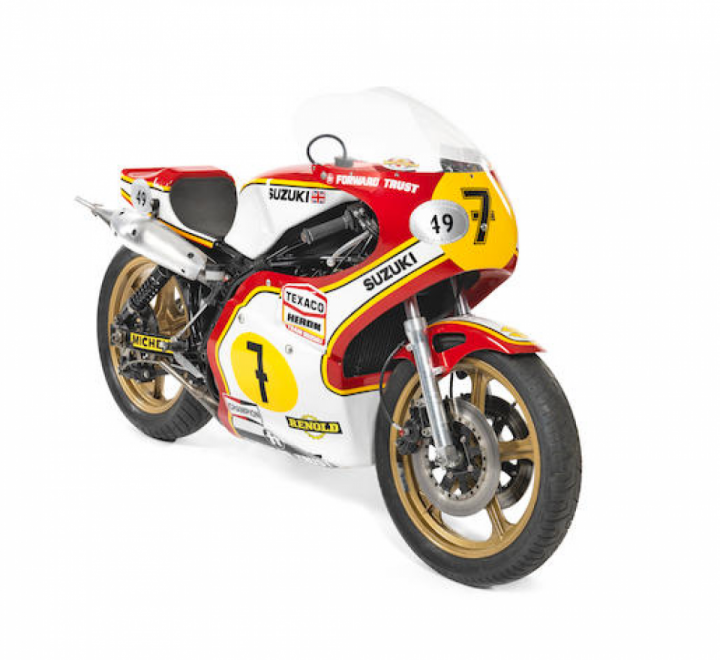
As a factory machine, this motorcycle differs in several ways from the customer Suzuki RG500 Mark 1. While most customer machines of the period had alloy Campagnolo or spoked wire wheels, this machine has the very rare Suzuki-manufactured XR14 magnesium wheels, as recorded in the 1976 edition of Motocourse. It also has the factory four-bolt brake discs, unlike the customer six-bolt version. Note the early rev counter starting at 5,000rpm - these bikes were peaky and had a narrow power band. Other noteworthy features include the factory handmade billet fork legs, as opposed to the normal cast units; these were also of larger diameter and air assisted, features only found on factory bikes at the time.
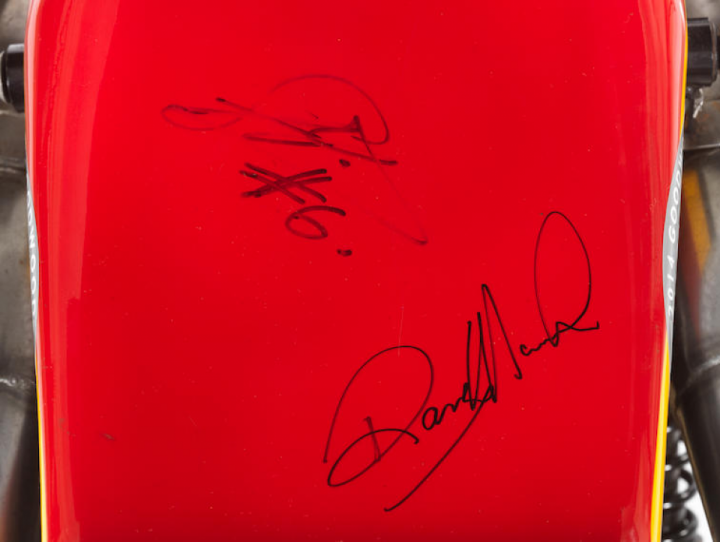
The frame is the early type with provision for an integral oil reservoir, which the very early bikes had to feed the disc valves. However, this arrangement was soon superseded by removing the pump and using pre-mix fuel. The provision for feeding oil to the disc valves can still be seen on the disc valve covers. Other features of the factory machines were the 'aero' fuel filler as opposed to the screw type, and the 'duck bill' style factory fairing for improved aerodynamics.
The current owner purchased this XR14 some 30 years ago from Dutch Grand Prix rider Rob Bron. Sold as an ex-Barry Sheene bike, it was untidy but still had the Texaco livery. Subjected to a full restoration, the Suzuki spent most of its later life indoors on display before being sold by Bonhams at Stafford in October 2006 (Lot 643). However, a few years later the seller bought it back and treated the machine to a second 'last nut and bolt' complete restoration, since when it has only been run twice - at the Goodwood Festival of Speed in 2015 and 2016 - where it performed faultlessly. Its last appearance was at the British MotoGP round at Silverstone for the Barry Sheene Tribute on 4th September this year. We are advised that all the internals are good, and that one of the few changes made is the provision of new tyres.
This machine was used at GoodWood Festival of Speed in 2014 & 2016.
Credit: bonhams
#Moto #Bike #MotoSport #Race #Racing


